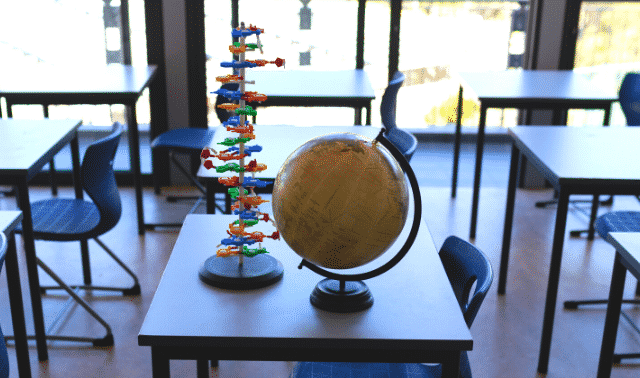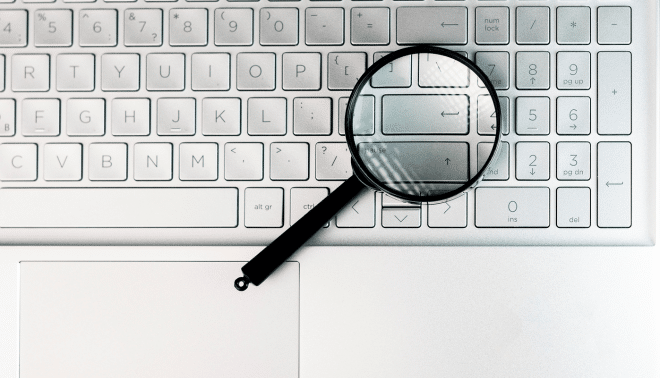
For many DNA testers, ethnicity estimates are the most exciting part of taking an autosomal DNA test. However, interpreting the results isn’t as straightforward as we might like.
Consider this: if I asked you to describe where you are right now, how would you answer? You might say that you’re sitting in a chair, standing in line, or riding in the car. You might add that you’re in your house, at the store, or on I-95. Further descriptors might include your city, country and, if you were my very literal 11-year-old, you might end with “Milky Way Galaxy” or “the universe.” Ultimately, you’d pull out a map or more likely, your phone, to immediately triangulate your position using satellites in space to confidently place you on screen within feet of your actual position.
But what if I hauled you off blindfolded into the desert, handed you a map of New York City, and told you to get yourself home to Ohio. Would you be able to do it? Imagine the feeling you might have when the blindfold comes off and all you see is the horizon stretching out in all directions. That feeling of being completely disoriented, followed by confusion as you try to make sense of the map in your hands, versus what’s in front of you and what’s in your memory.
This lost feeling is what many people experience when they look at an aesthetically pleasing but completely baffling ethnic heritage map included with their autosomal DNA test results. Such a map typically shows one or more areas of the world with colored circles around countries or regions where test results indicate the person’s DNA originated.
You should be able to use a map to find your location, or in this case, the locations of your ancestors—right? But you’ll notice that absent from this map is the satellite triangulation providing a big, clear X to mark a spot. Instead, the map has several figurative Xes that all say, “You were here (probably).”
To make matters worse, a map from one testing company may tell you something totally different from another company’s map. Talk about an identity crisis. But we’re here to help you through it, and help you get the most from your DNA testing investment. First, we’ll talk about how your DNA map is created, then we’ll answer frequently asked questions about autosomal ethnicity maps.
How to Interpret Your Ethnicity Results
An autosomal DNA test, the kind used to create these maps, can help you trace both your maternal and paternal sides. You get half of your DNA from your mom, and half from your dad. That means you have about 25 percent of your grandparents’ DNA, and about 12.5 percent of your great-grandparents’ DNA, and so on. The results of testing come in one big pile, with no distinction as to which piece of DNA came from which ancestor. This test provides two different kinds of results:
Matches: This list contains others who share DNA with you, and therefore share an ancestor with you at some point.
Ancestral origins: This map and accompanying list of percentages purportedly shows your ancestral locations. These geographical results—which we’ll explain here—are often referred to as your admixture results.
I think the first thought that comes to most minds upon viewing an autosomal DNA map for the first time is, “Huh?” This is followed by a little head scratching, a few more aimless clicks around the testing company’s website, more head scratching, and ending finally with a navigation to Netflix to see what’s on tonight. At best, you chalk up these results to one of life’s great mysteries and you move on. But you can understand these results. And sometimes even find them useful in your genealogy research.
In my early days at the Sorenson Molecular Genealogy Foundation, back when using DNA to help determine a person’s origins was more hope than substance, I attended a meeting with other genetic genealogists andgeneticist Scott Woodward, then director of the foundation. He was about to show us some mind-blowing data. A series of images appeared on a screen. At first these were weblike white lines representing relationships between clusters of brightly colored balls. The balls were individuals. The clusters happened when those individuals shared genetic traits. It was exciting to see that people with unknown relationships were creating these genetic groups. There were some outliers, of course, but for the most part, the images were clean and distinct.
As if that wasn’t demonstration enough that genetics could help distinguish populations, Dr. Woodward zoomed in on one cluster. It was gold, and set apart from the others. The black background became a world map that framed the gold cluster squarely in the islands of Polynesia. I can remember the thrill of the discovery, that not only were shared genetics defining this cluster, but those genetics also were tied to a particular geographic location. That thrill of discovery is what drives most people to pursue this type of DNA test.
The most important thing you can remember about autosomal DNA testing is that because of the way DNA is inherited—half from each parent—each generation essentially loses half of its autosomal DNA. This means your genetic pedigree isn’t going to be the same as your genealogical pedigree. Your genealogical pedigree can contain millions of names, all equally connected to you through your paper records and documentation. Your genetic pedigree contains only a fraction of those millions of individuals, those whose DNA you’ve actually inherited.
Now you have the data that you want, but how can we look at the data in “a bunch of different ways?” Those 300,000 data points that passed our interrogation are important. Remember, an estimated 15 million other data points didn’t pass. So, an important part of the process is understanding the “what ifs?” What if we had used a different 300,000 data points? Would we get the same results? This is the question that keeps the computers at our testing companies up at night. They’re busily trying to figure out other ways the data could have arranged itself and then combining all the actual data and all the fabricated data into one cohesive answer.
Of course that answer is “the best possible ethnicity numbers.” These numbers are only as good as the data they’ve come from. Think of these ethnicity numbers as living and breathing and therefore changing. Genetic data will surely improve over time as more DNA samples are amassed and scientists develop new ways to think about these complicated issues.
This is really the bottom line when you’re trying to find yourself on autosomal DNA maps: The maps are cool to look at, interesting to think about, and can confirm (but can’t negate) that you have a specific ethnic heritage, such as African, Jewish or Native American. It’s neat to have a picture (if a somewhat fuzzy one) of where you came from. But in the end, to gain the most value from your ethnicity results, you’ll need to use them in tandem with your very genealogically valuable list of autosomal DNA matches. That’s where the real work of genetic genealogy takes place.
A few last things…
- Genetic genealogy is a rapidly changing field. Keep up with new developments by following websites and blogs such as the International Society of Genetic Genealogy, Your Genetic Genealogist, DNAeXplained and the Genetic Genealogist.
- You can have your Y-DNA or mitochondrial DNA tested for ethnic origins, too. Remember that these tests, though, cover only paternal or maternal lines, respectively. Also, because this type of DNA mutates infrequently, results will relate to your family’s ancient origins, not to recent generations.
A version of this article appeared in the July/August 2015 Family Tree Magazine.




